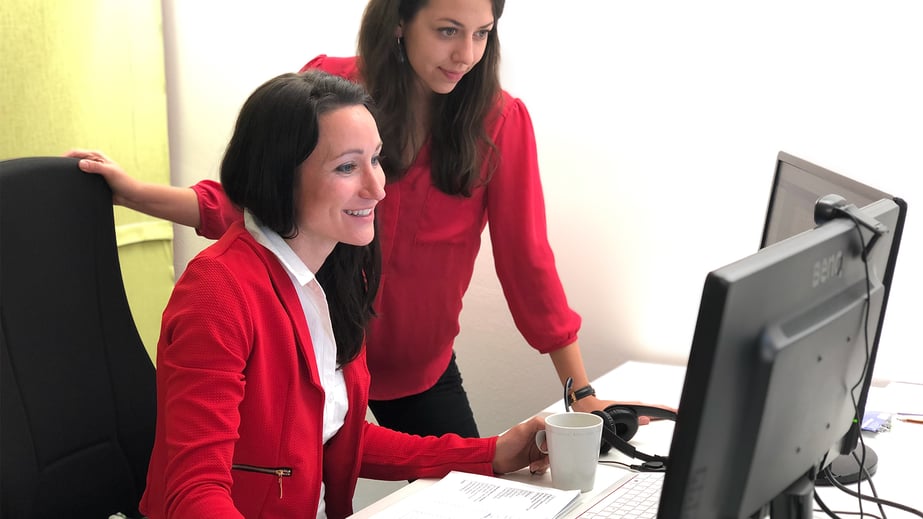 “Really, translators still exist?”, “But there’s Google Translate?” – anyone who’s ever worked in a translation department will probably have heard something along those lines. It shows that many people don’t know, much less appreciate, what in-house translation departments actually do. But in fact, a translation department can be a serious financial asset for a business.
“Really, translators still exist?”, “But there’s Google Translate?” – anyone who’s ever worked in a translation department will probably have heard something along those lines. It shows that many people don’t know, much less appreciate, what in-house translation departments actually do. But in fact, a translation department can be a serious financial asset for a business.
What do in-house translation departments offer?
Whatever they’re called – “Global Services”, “Language Centre”, “Language Services” or “Translation Services” – translation departments turn a monolingual business into a multilingual one.
We think the name is important when it comes to recognizing the crucial work that in-house translation departments do. Because their staff have invaluable expertise, and because they use and are responsible for managing genuine assets in the form of translation memories, CAT grids and term bases, they should be called “Language Asset Managers” rather than merely “Translators”. A good translation department will have experts who save their business a considerable amount of money, improve its public image and help it avoid expensive legal disputes. How this works can be explained in 7 points:
Asset management role No. 1: The translation memory (TM)
The in-house translation department manages the translation memory – and if it’s managed well, it’s invaluable. Assuming the CAT grid is set up appropriately, text only has to be translated (and paid for) once, even if it occurs repeatedly. Well-maintained TMs can save businesses a lot of money: larger businesses estimate seven-figure savings every year. Poorly maintained TMs, on the other hand, can lead to texts unnecessarily being translated again at considerable cost, often without Controlling being aware of it. So managing translation memories is an extremely important job which can play a major role in a business’s success.
Asset management role No. 2: The CAT grid
The CAT grid is the pricing structure for the text to be translated, as determined by the match rate in the TM. Only a trained Language Asset Manager can assess the source texts and the quality of the existing TMs well enough to agree an appropriate CAT grid with the translation service provider.
Asset management role No. 3: The term bases
Like the TM, the term base is a valuable resource that can be extremely valuable when it comes to quality assurance and saving money. But the full potential of a term base (and in turn its added value for the business) can only be realized if it’s used correctly, and that’s the job of the in-house translation department: to ensure that the term base only contains approved terms that help translators produce high-quality translations. If so, it’s actually possible to quantify the monetary value of each term and illustrate the added value of the term base as a sum of money.
Asset management role No. 4: Consistent source texts
One of the most effective ways to save money in the translation process is before it even begins: by ensuring that your source texts are suitable for translation. Your in-house translation department can advise their colleagues in the documentation department on how to do this, and further down the line you’ll see the difference in your translation costs.
Asset management role No. 5: Quality management
For the staff in your in-house translation department, quality is their top priority – they’re passionate about language and about making your company truly multilingual. An effective in-house translation department doesn’t just boost your business brand: high-quality translations also help you minimize liability and avoid the worst-case scenario of claims for damages resulting from poor translations. And if claims are made against you, a well-run in-house translation department will have documented all the steps involved in the translation and can use these metadata to identify the source of the error, dismiss the claim or demand redress.
Asset management role No. 6: Technology leverage
Language Asset Managers who are familiar with the technology at their disposal, such as CAT tools, will know how to use it as effectively as possible – whether it’s automation and interface optimization, pseudo-translations or using macros.
Asset management role No. 7: Data security
As language industry experts, the staff in your in-house translation department also play an important role in safeguarding your business data. They are responsible for demonstrating the dangers of uncontrolled use of free machine translation tools and for ensuring that sensitive documents are only sent to translation service providers over secure connections.
We see the potential – but how can my department prove how valuable it is?
Your in-house translation department has the potential to make a big contribution to your business’s performance, but all too often other departments and the executive management don’t see this potential. If there’s one thing above all that we recommend to illustrate the value of your translation department, then it’s this: document everything you do! Make clear to the executive management just how much added value your department adds by carefully recording the savings you generate for the business and every other way it benefits from the work you do. So the next time someone asks “What’s the point in a translation department?”, you’ve got the ammunition you need to make the case for the long-term future of your team.
Main image: © MEINRAD


